You gave birth!
You did it!
You really did it!
She’s beautiful. She’s finally here. You are absolutely blown away by the experience and this perfect little baby that has been placed on your chest. Your partner cries, you cry, you have never been more filled with love and excitement in your entire life when suddenly your doctor says… “ok, I need you to give me a little push”.
You follow his or her direction and you bear down.
You feel that second life force move through your body.
It takes on the shape of your anatomy and with one long and laborious push, your placenta is here.
Your placenta. The organ that your magnificent body grew to nourish and grow your baby. The placenta that at about 8 weeks into your pregnancy took over the management of your hormones and kept you emotionally balanced (well, for the most part any way).
It’s fascinating and your provider asks you, “do you want to see your placenta?” You hesitate but you know it is too incredible of an opportunity to pass up and you take a glimpse of it. Wow…
What happens next can change your next 6 weeks of life dramatically. You have 2 choices (in most hospitals)
· Disregard it as medical waste
· Take it home with you
If you choose the first option, like many women do and disregard it, you will never know the “could haves”. It will be red bagged and discarded and you will not know whether it could have impacted your postpartum period in a different way.
Choose to take it home with you and once again, you have options.
· Encapsulate it for ingestion
· Ingest it raw
· Plant a tree to commemorate the birth of you as a mother and of your child and use it as fertilizer.
· Freeze it and show it to your child once they are old enough to understand what it is
It is becoming more and more popular for women to encapsulate their placentas for ingestion. The benefits are tremendous and they include
· An increase in the production of breast milk
· Increased energy levels
· Decreased postpartum bleeding
· Decreased risk of postpartum depression
· And much more…
Placenta Encapsulation for the purpose of ingestion
The process of encapsulation is simple with the proper equipment and should always be done in the home of the person consuming it.
· The placenta is cleaned
· The placenta is steamed with ginger and myrrh
· The steamed placenta is sliced and placed on a dehydrator and left overnight
· On day 2, the placenta is ground into a powder and placed in to capsules
· Your placenta encapsulation specialist gives dosage instructions and answers any questions you may have
If you are unsure and you are not able to definitively decide what you want to do in terms of these options, consider taking it home and freezing it. It’s kind of like an insurance policy. If you need it, you have it. If you discard it as medical waste, it’s gone forever.
Authored by: Randy Patterson

